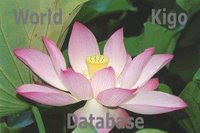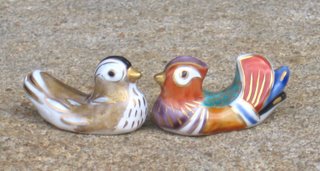[ . BACK to DARUMA MUSEUM TOP . ]
chawan - tea bowl . . . see below
:::::::::::::::::::::::::::::::::::::::::::::::::::::::::::::::::::::::::::::::::::::::::::::::::::::
Gohan chawan ご飯茶碗 rice bowl
First some basic Japanese language:
You eat rice out of a bowl called
"chawan", meaning "bowl for TEA".
And the direct translation of the word for
a teacup, YUNOMI, is "Drinking Hot Water".
yunomi chawan 湯呑茶碗(ゆのみちゃわん)
Chawan is also a word used for large tea cups
macha chawan 抹茶茶碗.
see below
Blue Himedaruma Princess Daruma

 Photos from my friend Ishino.
Photos from my friend Ishino.
:::::::::::::::::::::::::::::::::::::::::::::::::::::::::::::::::::::::::::::::::::::::::::::::::::::


by 田中利斉
だるまが七転八起
復興だるまとして、日本団結してがんばりましょう
A Daruma cup to help the Tohoku recovery
source : honjien
. Japan after the BIG earthquake March 11, 2011 .
:::::::::::::::::::::::::::::::::::::::::::::::::::::::::::::::::::::::::::::::::::::::::::::::::::::
 fuku Daruma 福だるま飯碗
. Aritayaki 有田焼 Daruma of Arita Pottery .
fuku Daruma 福だるま飯碗
. Aritayaki 有田焼 Daruma of Arita Pottery .
:::::::::::::::::::::::::::::::::::::::::::::::::::::::::::::::::::::::::::::::::::::::::::::::::::::


:::::::::::::::::::::::::::::::::::::::::::::::::::::::::::::::::::::::::::::::::::::::::::::::::::::
TEA BOWL
A chawan (茶碗) is a bowl used for preparing and drinking matcha (powdered green tea) in Japanese tea ceremonies. In Japan, "chawan" also is the standard term for bowls for rice. If it is necessary to distinguish between them, bowls for rice are called gohan chawan (usually pronounced gohan-jawan), while the ones for use in chanoyu are called matcha chawan (matcha-jawan). The handle-less cups used for drinking regular course steeped tea are generally referred to as yunomi (lit., cups for hot water), while the small porcelain cups used for fine-quality steeped green tea are often distinguished as senchawan. When the word chawan stands alone, it is normally prefixed with the honorific o-.
There are many types of chawan used in the tea ceremony, and the choice of their use depends upon many considerations.
- - - More in the WIKIPEDIA !
:::::::::::::::::::::::::::::::::::::::::::::::::::::::::::::::::::::::::::::::::::::::::::::::::::::
Rice bowl with a lid 蓋付茶碗
Kutani pottery

 Photos from my friend Ishino san.
Photos from my friend Ishino san.
:::::::::::::::::::::::::::::::::::::::::::::::::::::::::::::::::::::::::::::::::::::::::::::::::::::

 CLICK for more chawan ...
CLICK for more chawan ...
:::::::::::::::::::::::::::::::::::::::::::::::::::::::::::::::::::::::::::::::::::::::::::::::::::::
 Daruma is watching -
Daruma is watching -
have you cleaned your plate
tonight ?
:::::::::::::::::::::::::::::::::::::::::::::::::::::::::::::::::::::::::::::::::::::::::::::::::::
chawan 茶碗 tea bowl
- quote
Chawan: Simply, some of the hardest works of pottery to create
by Robert Yellin
In the world of Japanese traditional ceramics there is not one form held in higher esteem then a chawan, a “mere” bowl used to serve whipped green tea.
For more than 400 years this celebrated clay form has challenged potters to create a perfect vessel of segmented harmony to “simply” enjoy a cup of tea. Yet there is much more than meets the eye when we begin to look at chawan and the subtle nuances they embody, the spirit they reveal, and the so-called “hand-held universe” as they are poetically referred to.

The masterpieces from Japan were made in the Momoyama and Edo periods (1573-1867) and again in a Momoyama-style revival of sorts beginning in the 1930s. It’s from this latter period to the present that the current “Master Teabowls of Our Days” exhibition at the Musée Tomo Museum focuses on, and it starts with the greats of the day.
But before mentioning names, what are the factors that define a worthy chawan? This surely is a question open to debate, yet most will agree upon this: It has to be a well-balanced, pleasantly-weighted form that brings together all aspects of composition from the way the lip is angled, to the curves of the body and how that will influence the inner “pool,” all the way down to the underside where the kodai-foot is carved. (Some may say chawan aficionados have a kodai fetish, but more on that later.)
Now this may all sound very easy, yet many potters have told me making a good chawan is the hardest thing in the world for them. Why? It’s the giving birth to the essence of materials and hopefully allowing technique to be forgotten, so that forming becomes like breathing, while spirit shines; only then will a chawan come to life.
The ones on display at the Musee sing that song of “life.” Interestingly enough, the chawan chosen for the cover of the catalog was made by a self-confessed amateur, Handeishi Kawakita (1878-1963). Kawakita was not a potter by trade; he came from a wealthy banking family based in Tsu, Mie Prefecture. At the age of 56 he left behind the corporate world and built a climbing chamber kiln on his extensive property. Thus began his life as a potter.
MORE
source : www.japantimes.co.jp/culture
“Master Teabowls of Our Days” - 現代の名碗
Musée Tomo till Jan. 5, 2014 - 東京都港区虎ノ門 - 菊池寛実記念 智美術館
川喜田半泥子、加藤唐九郎、金重素山、三輪壽雪、岡部嶺男、鈴木藏、
樂吉左衛門から若手作家まで
source : www.musee-tomo.or.jp
松虫のりんとも言はず黒茶碗
matsumushi no
RIN to mo iwazu kuro-jawan
the pine bug
does not make one sound -
this black tea bowl
. Hattori Ransetsu 服部嵐雪 .

:::::::::::::::::::::::::::::::::::::::::::::::::::::::::::::::::::::::::::::::::::::::::::::::::::
朝顔を一ぱい浮す茶碗哉
asagao o ippai ukasu chawan kana
filled with floating
morning-glories...
the teacup
Sakuo Nakamura believes that the flowers are reflected in the tea.
He writes, "A teacup is put on the morning breakfast table. On the surface of the tea, morning-glories are mirrored. Issa has succeeded in catching the large morning atmosphere in a little teacup."
Tr. and Comment - David Lanoue
..........................................................................
a tea bowl
full of floating
morning glories
Tr. Chris Drake
This early autumn hokku is from the 7th month (August) of 1821, when Issa was in his hometown taking care of his wife Kiku, who had come down with a severe case of gout. In Issa's time people drank green tea mostly in bowls that were the same size as rice bowls and tea ceremony bowls that were often in strikingly artistic shapes. Most commoners, however, used the same kind of bowl to drink tea and to eat rice and certain other foods. The small cups commonly used to drink green tea in contemporary Japan are basically the cylindrical cups (yunomi) that were originally for drinking warm water and also green tea in Issa's time. In his time the wider tea bowls were used not only for drinking green tea but sometimes for drinking sake, water, and other liquids.
This hokku can be interpreted in various ways, but I take it to be about a tea bowl that has been filled with water, upon which several morning glories have been floated. It was common to float various kinds of flowers or flower petals in bowls of sake or water, though water seems more likely here. Perhaps Issa puts the bowl by the mat on which his sick wife is lying, or perhaps on a tray or low table nearby.
Chris Drake
. WKD : Kobayashi Issa 小林一茶 in Edo .
. Teacups 湯のみ yunomi "drinking hot water" .
:::::::::::::::::::::::::::::::::::::::::::::::::::::::::::::::::::::::::::::::::::::::::::::::::::::::::::::::::::::::::::

19th century by
Okuda Eisen (1753-1811)
source : Allan Scott
:::::::::::::::::::::::::::::::::::::::::::::::::::::::::::::::::::::::::::::::::::::::::::::::::::::::::::::::::::::::::::
KIGO
. Toowan Kuyoo 唐椀供養 (とうわんくよう)
memorial service for Chinese rice bowls .
Temple Manman-ji (万満寺 - 萬満寺), Matsudo, Chiba
Tea Ceremony SAIJIKI
.......................................................................
 source : mag.japaaan.com
types of #chawan
Japanese Tea Bowl Shapes - with illustration
source : mag.japaaan.com
types of #chawan
Japanese Tea Bowl Shapes - with illustration
Mike Martino and Tatsua Tomeoka
Komogai-nari: Komogai Shape Tea Bowls
井戸型, Ido-gata: Ido or Well Type Tea Bowls (抹茶茶碗)
半筒型, Han tsutsu-gata: Half Cylinder Shape Tea Bowls (抹茶茶碗)
呉記型, Goki-gata: Goki Type Tea Bowls (抹茶茶碗)
天目型, Tenmoku-gata: Tenmoku Type Tea Bowls (抹茶茶碗)
平形, Hiragata: Flat Shape Tea Bowls (抹茶茶碗)
杉形, Sugi-nari: Cedar Shape Tea Bowls (抹茶茶碗)
椀形, Wan-nari: Wooden Bowl Shape Tea Bowls (抹茶茶碗)
沓形, Kutsu-gata: Clog or Shoe Shape Tea Bowls (抹茶茶碗)
筆洗形, Hissen-gata: Brush Washer Shape Tea Bowls (抹茶茶碗)
筒型, Tsutsu-gata: Cylinder Type Tea Bowls (抹茶茶碗)
胴締, Dojimari-gata: Waist Type Tea Bowls (抹茶茶碗)
鉄鉢形, Wa-nari: Circle Shape Tea Bowls (抹茶茶碗)
- source : flyeschool.com/content/japanese-tea-bowl-shapes -
:::::::::::::::::::::::::::::::::::::::::::::::::::::::::::::::::::::::::::::::::::::::::::::::::::::::::::::::::::::::::::
October 2017 - Facebook
- Larry Bole wrote -
I wouldn't be surprised if there are haiku about teabowls, as well as mentioning teabowls, but the only one that comes to mind offhand is this, by Kikusha (1753-1820):
tenmoku ni koharu no kumo no ugoki kana
in the teabowl
this motion of the clouds
of "little spring"
Kikusha, trans. Higginson.
Here is Higginson's comment (from his book, "The Haiku Seasons"):
"Little srping" refers to a spring-like week or two in early winter, similar to North American "Indian summer". The word here translated as "teabowl" ('tenmoku') literally means "sky-eye", which could be taken as the eye of Heaven, or the eye looking at the sky. It refers to one of the more valuable types of bowls used in the tea ceremony ('cha no yu'). The poem suggests that the tea master's bowl catches the season itself, a high compliment.

天目茶碗 Tenmoku Chawan
Tomioka Tessai Tea Bowl
:::::::::::::::::::::::::::::::::::::::::::::::::::::::::::::::::::::::::::::::::::::::::::::::::::::::::::::::::::::::::::
[ . BACK to DARUMA MUSEUM TOP . ]
[ . BACK to WORLDKIGO . TOP . ]
- #"chawan #teabowl #ricebowl -
:::::::::::::::::::::::::::::::::::::::::::::::::::::::::::::::::::::::::::::::::::::::::::::::::::::




























































